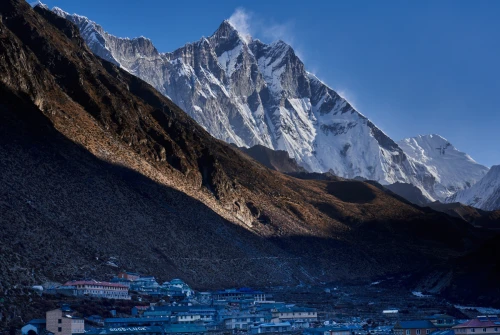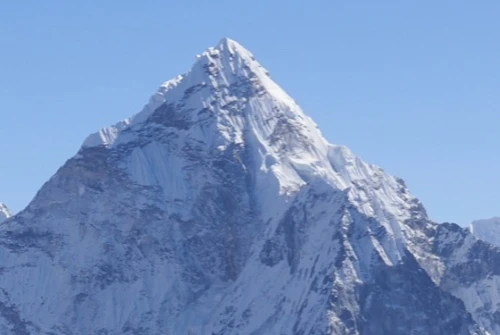Everest Base Camp (EBC) is more than just a trekking destination; it's a life-changing journey that brings you face to face with the mighty Mount Everest, the tallest peak on Earth. Nestled deep in Nepal’s Khumbu region, this trek offers a spectacular blend of natural beauty, adventure, and cultural richness, making it one of the most sought-after high-altitude trails in the world.
For Indian travelers, this trek is particularly rewarding. Nepal’s geographic proximity and visa-free access (or visa-on-arrival) for Indian nationals make planning smooth and convenient. The cost of the Everest trek is also significantly lower compared to most international destinations, yet it delivers a world-class experience. Plus, the warmth of Nepali hospitality, shared cultural values, familiar food options, and language ease all contribute to making the journey feel both thrilling and welcoming.
As we trek through lush rhododendron forests, across swinging suspension bridges, and into remote Sherpa villages, we witness the raw beauty of the Himalayas up close. Along the trail, we’re treated to panoramic views of Everest, Lhotse, Nuptse, Ama Dablam, and many other majestic peaks. The final destination, Everest Base Camp (5,364m), sits beneath the Khumbu Icefall and is the very starting point of Everest summit expeditions. A hike up to Kala Patthar (5,545m) also rewards trekkers with the best possible view of Mount Everest, a sunrise moment that feels straight out of a dream.
What truly sets this trek apart is the deep immersion into Sherpa culture. From ancient monasteries and colorful prayer flags to the soft-spoken warmth of local guides and porters, every day on the trail is filled with cultural encounters that add depth to the adventure.
How to Reach Everest Base Camp from India
Reaching Everest Base Camp from India involves taking a flight to Nepal. Many direct flights are available from Delhi, Mumbai, Kolkata, and Bangalore to Kathmandu. From Kathmandu, trekkers must take a short yet thrilling flight to Lukla, the gateway to the EBC trek. The trekking route follows Lukla – Phakding – Namche Bazaar – Tengboche – Dingboche – Lobuche – Gorakshep and Everest Base Camp.
Cost of Everest Base Camp Trek for Indians
The cost of the Everest Base Camp trek for Indians varies depending on the package and level of comfort. A budget trek costs between INR 70,000 – 1,20,000, covering permits, food, accommodation, and flights. Luxury treks with better accommodations, private guides, and added comforts can exceed INR 1,50,000.
Permits Required for Indians
Indians require permits to trek to Everest Base Camp, including the Sagarmatha National Park Permit and the Khumbu Rural Municipality Permit. These permits can be obtained in Kathmandu or Monjo, which is the entry point to the national park.
Why Do You Need Permits for Everest Base Camp Trek?
The Nepalese government mandates trekking permits to regulate tourism, protect the environment, and generate revenue for conservation efforts. Permits ensure that trekkers comply with local regulations and help authorities track visitors in case of emergencies.
Without proper permits, trekkers may face legal issues, fines, or even be denied entry at certain checkpoints along the route.
Types of Permits Required for Indians
Indians trekking to Everest Base Camp need to obtain specific permits to access protected areas. These include:
a) Sagarmatha National Park Entry Permit
This permit is mandatory as EBC falls within Sagarmatha National Park, a UNESCO World Heritage site. It helps fund conservation projects and infrastructure for trekkers.
Cost for Indians: NPR 1,500 (Approx. INR 940)
Where to Get It?: Nepal Tourism Board in Kathmandu or Monjo Checkpost on the way to EBC
b) Khumbu Pasang Lhamu Rural Municipality Permit
Introduced in 2018, this permit replaces the TIMS Card for Everest region treks. It supports local communities and rural development.
Cost for Indians: NPR 2,000 (Approx. INR 1,250)
Where to Get It?: Lukla or Monjo Checkpost
c) Gaurishankar Conservation Area Permit (Alternative Route)
If you choose the Jiri to Everest Base Camp route instead of flying to Lukla, you need an additional permit for the Gaurishankar Conservation Area.
Cost for Indians: NPR 3,000 (Approx. INR 1,880)
Where to Get It?: Kathmandu
d) TIMS Card (No Longer Required)
Earlier, a TIMS (Trekkers’ Information Management System) Card was required for EBC trekkers, but it has been discontinued for this trek.
Cost of Permits for Indian Trekkers
Here’s a summary of the total cost of permits required for the Everest Base Camp trek:
Permit Type | Cost for Indians (NPR) | Approx. INR |
Sagarmatha National Park Permit | 1,500 | 940 |
Khumbu Pasang Lhamu Municipality Permit | 2,000 | 1,250 |
Gaurishankar Conservation Area Permit (Only for Jiri Route) | 3,000 | 1,880 |
Total (Without Jiri Route) | 3,500 | 2,190 |
Where to Obtain Everest Base Camp Permits?
Indian trekkers can obtain their permits from different locations:
Sagarmatha National Park Entry Permit:
1. Nepal Tourism Board, Kathmandu
2. Monjo Checkpost (before entering the park)Khumbu Pasang Lhamu Rural Municipality Permit:
1. Lukla (before starting the trek)
2. Monjo CheckpostGaurishankar Conservation Area Permit:
1. Nepal Tourism Board, Kathmandu (only required for the Jiri route)
It’s best to get your permits in Kathmandu to avoid checkpoint delays.
Fitness and Training for Everest Base Camp
Preparing for the Everest Base Camp (EBC) trek requires a well-structured fitness routine, as this high-altitude journey is physically demanding. The trek involves long walking hours, steep ascents, and unpredictable weather conditions. Trekkers should begin training at least 2-3 months in advance to build endurance, strength, and mental resilience.
Cardio Training
Cardiovascular fitness is crucial because lower oxygen levels at high altitudes make breathing more challenging. Activities like running, cycling, swimming, and stair climbing improve heart and lung capacity, helping trekkers adapt to the strenuous conditions. Ideally, trekkers should engage in at least 4-5 cardio sessions per week, gradually increasing intensity.
Building muscle strength is equally important. Leg muscles bear the most strain during the trek, so exercises like squats, lunges, step-ups, and calf raises should be incorporated. Upper body strength also helps, as trekkers will be carrying backpacks. Incorporating push-ups, pull-ups, and core workouts can prevent fatigue.
Practicing on real trails before the trek helps simulate the conditions of EBC. Trekkers should try day hikes on uneven terrain with a loaded backpack to mimic actual trekking conditions. If possible, training at high-altitude locations in India like Ladakh or Himachal Pradesh can be beneficial.
The EBC trek is as much a mental challenge as it is physical. Long trekking days, freezing temperatures, and altitude sickness can be overwhelming. Practicing yoga, meditation, and breathing exercises like pranayama helps maintain focus and manage stress.
Accommodation and Food on the Trek
The Everest Base Camp trek offers basic yet comfortable accommodation options and local food that provides energy for long trekking days.
Accommodation Options
Most trekkers stay in teahouses—small lodges run by locals. Teahouses provide:
- Basic rooms with twin beds, blankets, and sometimes heated dining areas.
- Shared washrooms, often without hot showers at higher altitudes.
- Charging facilities (may require extra payment).
Higher up, accommodations become more basic, with fewer facilities due to logistical difficulties.
Food plays a vital role in maintaining energy. Most teahouses offer:
- Dal Bhat: A traditional Nepali meal of lentils, rice, and vegetables, providing sustained energy.
- Noodles and Pasta: Quick and filling options.
- Momos: Nepali dumplings that are both tasty and nutritious.
- Porridge and Pancakes: Common breakfast items that provide warmth and energy.
- Tea and Coffee: Hot drinks help trekkers stay warm in the cold.
Carrying snacks like energy bars, chocolates, and dry fruits is also recommended for quick boosts of energy.
Acclimatization and Altitude Sickness
Altitude sickness is a major concern for trekkers heading to Everest Base Camp. Acclimatization is essential to help the body adjust to low oxygen levels at higher altitudes.
Why Acclimatization is Important
As altitude increases, oxygen levels drop, making breathing more difficult. Symptoms of altitude sickness include headache, nausea, dizziness, and shortness of breath. If ignored, it can lead to severe conditions like HAPE (High-Altitude Pulmonary Edema) or HACE (High-Altitude Cerebral Edema).
Slow and steady trekking is the best way to prevent altitude sickness and ensure a safe journey.
Cultural Experiences on the Trek
The Everest Base Camp trek is not just about breathtaking landscapes—it’s also a chance to experience the unique Sherpa culture and Tibetan Buddhist traditions.
The cultural aspects of the Everest Base Camp trek make the journey even more memorable, blending adventure with spirituality.
Challenges for Indian Trekkers
The Everest Base Camp trek is a dream adventure for many Indian trekkers, but it comes with several challenges. Understanding these difficulties in advance and preparing accordingly can make the journey smoother.
- Extreme cold: Temperatures can drop below -15°C at higher altitudes, especially in winter.
- Strong winds: Wind speeds can make trekking difficult, particularly near Gorak Shep and Base Camp.
- Snowfall and storms: Sudden snowfall can obstruct trails, requiring flexibility in planning.
Packing the right clothing and gear, including thermal layers, a down jacket, waterproof outerwear, and insulated gloves, is crucial.
- Walking 5-7 hours daily for almost two weeks.
- Steep ascents and descents on rugged terrain.
- Carrying a backpack with essentials.
Regular cardio, strength training, and hiking practice for at least 2-3 months before the trek helps in building endurance.
- Flights from India to Kathmandu.
- Domestic flights from Kathmandu to Lukla.
- Trekking permits and guide/porter charges.
- Accommodation and food expenses.
Planning the budget and booking flights early can help reduce costs.
Final Thoughts
The Everest Base Camp trek is an unforgettable adventure that tests both physical and mental strength. For Indian trekkers, the journey offers a blend of thrilling landscapes, cultural experiences, and personal achievements. With proper fitness training, acclimatization, and the right mindset, anyone with determination can complete this trek.
The Sherpa hospitality, Buddhist monasteries, and breathtaking views of Everest and neighboring peaks make this a once-in-a-lifetime experience. However, thorough preparation, safety precautions, and a well-planned itinerary are crucial for making the trek safe and enjoyable.
If you are passionate about trekking and ready to embrace the challenges, Everest Base Camp awaits you!

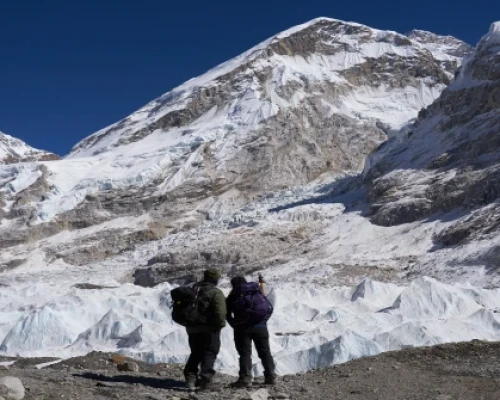

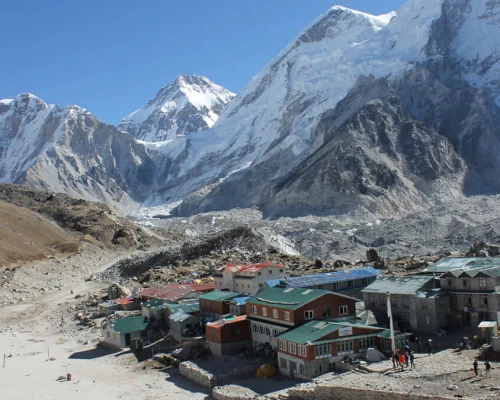

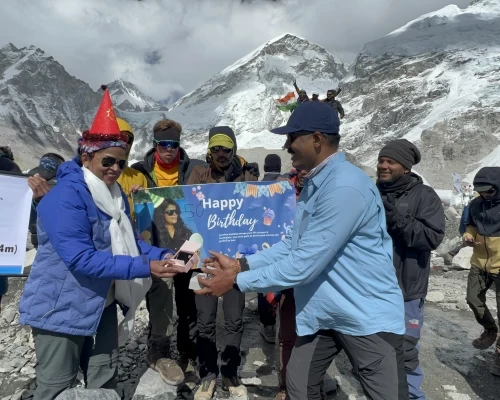
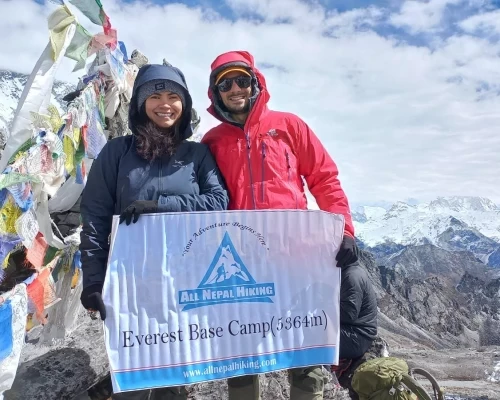
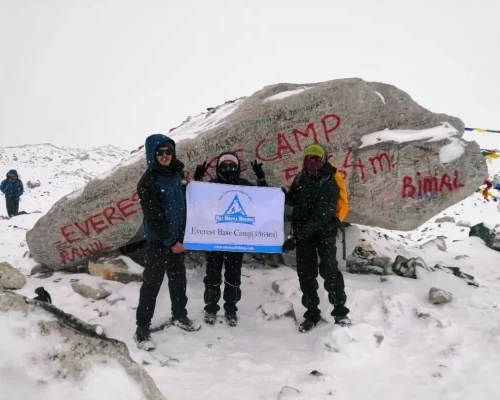
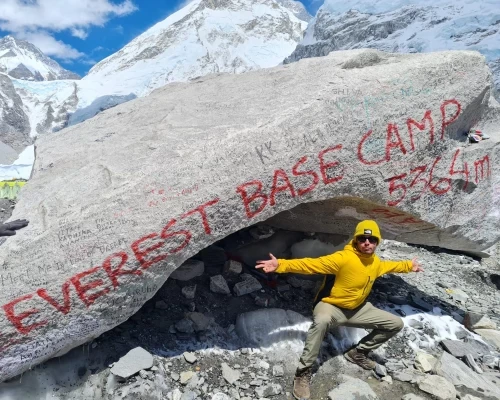


 based on 9 reviews
based on 9 reviews